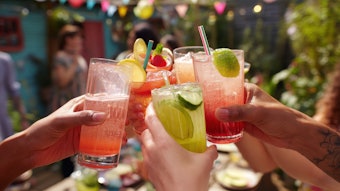
Color your taste buds. Penn State research has found that color can impact the taste of food and beverage, confirming previous studies on the subject matter.
"The color of a beverage can impact how we think it should taste," said John E. Hayes, associate professor of food science and director, Sensory Evaluation Center for Penn State. "For example, yellow is commonly associated with drinks that are more sour, like lemonade, whereas red is associated with drinks that are more sweet, like sports drinks.
Manipulating Flavor With Color
In findings published online in Food Quality and Preference, Penn State researchers set out to see if the color of a food or beverage can impact its taste. Additionally, the researchers wanted to determine why people enjoy bitter tasting foods and beverages and if there were differences between different bitter compounds. If there are different types of bitter tastes, it could then explain why someone might like the bitterness of coffee but not the bitterness of chocolate.
"Bitterness can indicate toxicity, but people still enjoy coffee, chocolate and IPA-style beers," said Molly J. Higgins, doctoral candidate in food sciences. "Why do people like some bitter compounds but not others?
To test their hypothesis, the researchers needed to see whether they could teach people to associate specific tastes with specific colors. The team created solutions that tasted bitter, sweet, sour or savory, and then paired each one with a unique color. To avoid preconceived color-taste pairing, they avoided pairing yellow with sour or red with sweet. Following the pairings, researchers had participants taste the colored liquids over four different sessions and then gave the participants uncolored solutions and asked them to taste and choose a color for each. Participants matched the correct color and taste 59% of the time, significantly higher than the random chance rate of 25%.
Related: A Tech Twist: Hacking Your Sense of Smell and Taste
Understanding Bitter Tastes
After demonstrating that color can impact taste, the researcher tested whether people can distinguish between three different bitter tastes - caffeine, quinine and the hop extract tetralone. The team of researchers then repeated the experiment with a new group of participants and assigned unique colors to the bitter chemicals. After four sessions, participants could not match the colors to their corresponding bitter compounds any better than expected chance.
"This finding could indicate that some people learn color-taste associations well, while others might be more resistant to changes or new color-taste associations," said Higgins. "This might have implications in the food industry if a company were to launch a new flavored product with a color. Some consumers might not learn or accept a new color and flavor pairing as well as others."
To learn more about the study, read the full press release here.










